Unless you have a short growing season in your area, most vegetables are easy enough to start from seeds that are sown directly in your garden soil. Here are 10 vegetables that are easy to start from seed.
Why Start From Seed (Vs. Transplant)?
There’s nothing wrong with starting your garden from small plants you purchase (known as “transplants”)—many people do!
In fact, a handful of vegetables are often best bought as nursery starter plants, particularly tender vegetables: tomatoes, peppers, and eggplants. These have a longer growing season.
Otherwise, it’s ideal to start your vegetables from seeds if possible. Here are some benefits:
- Seeds are much cheaper, especially in greater quantities. They often keep at least a few years and can be shared with friends and neighbors.
- Seeds offer much more variety than the often limited choice of transplants in a nursery. Just take a look at these seed catalogs and let the dreams begin!
- Some vegetables do not survive being transplanted from one place to another.
- Starting from seed means that you can sow seeds directly in the garden, which opens the door to growing crops such as corn, melons, squashes, beans, and peas, which simply do not grow as well when transplanted from one place to another.
- Starting plants from seed means you can ensure they are healthy and strong right from the start.
10 Easiest Vegetables to Grow Yourself
This is not a complete list by any means, but these are considered some of the easiest and most common vegetables that can be grown at home.
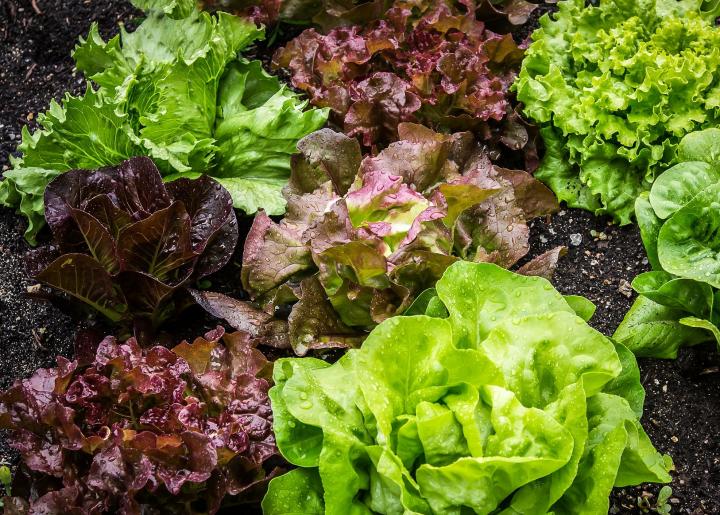
1. Lettuce
We’ve never known a garden that cannot grow lettuce.
Lettuce can be sown directly in your garden bed or started indoors for transplanting. It’s one of the few crops that can be grown all year in our climate, but in hot weather, it should be shaded and harvested at smaller sizes. Lettuce growth slows in shade; it is also slower to go to seed, or “bolt,” meaning it can be harvested for longer.
An endless assortment of leaf shapes and shades of green and red means you’ll never tire of growing new lettuce varieties. Leaf lettuces can be cut as they grow, and you can enjoy several harvests from the same plant by snipping off what you need each time.
If you want full heads of romaine and head lettuce to develop, thin them. Allow for 8 to 10 inches between plants. As you thin young plants, save the delicate small leaves for salads.
See our Growing Guide for Lettuce.
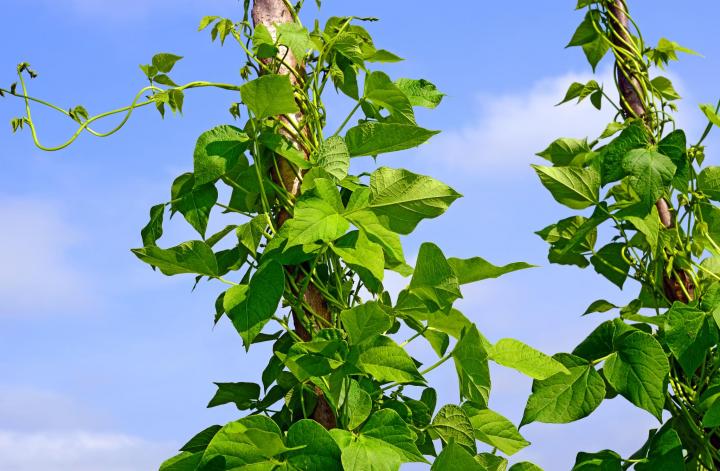
2. Green Beans
Beans grow even in fairly poor soil because they fix the nitrogen as they go! Bush varieties don’t require trellising, but pole varieties provide a more extended harvest. In cool areas, snap beans are the easiest. Lima beans, southern peas, and asparagus beans are easy to grow in hot areas. All bean plants are fast growers and thrive in warm, moist soil.
See our Growing Guide for Green Beans for more information on planting and growing beans!
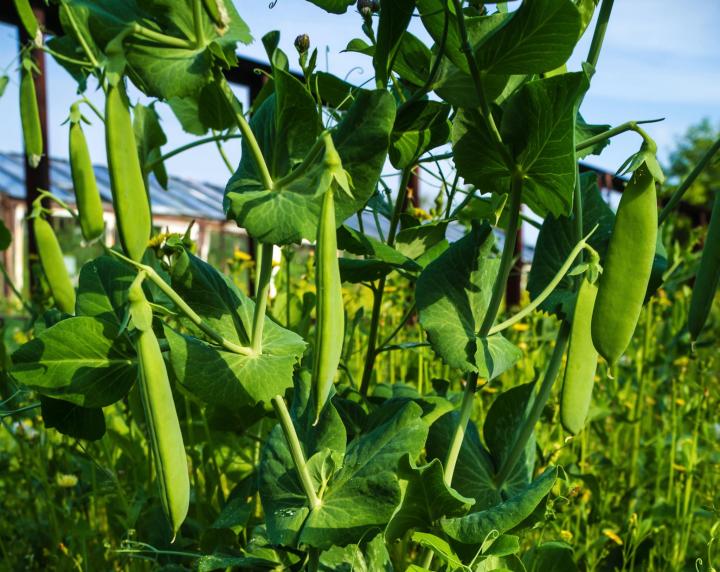
3. Peas
Plant peas as soon as the soil can be worked—2 weeks before your region’s average last spring frost, if possible. To harvest a continuous supply of peas during the summer, simultaneously sow varieties with different maturity dates. Then, sow more seeds about 2 weeks later. Continue this pattern, sowing no later than mid-June.
See our Growing Guide for Peas.
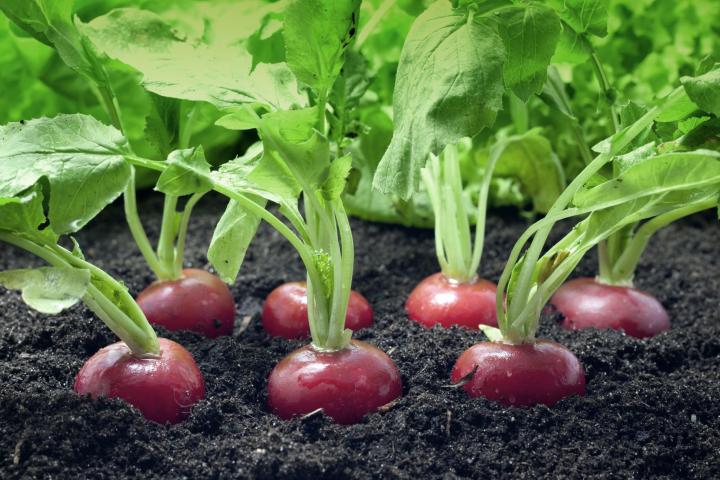
4. Radishes
Radishes can be harvested as soon as 24 days after planting and can be inter-planted with slower-growing vegetables. You can plant radishes as soon as you can work the soil in the spring.
Sow each seed 2 inches apart or more, or thin them to this spacing after they sprout. Cover the seeds with about half an inch of compost or soil.
Here’s a tip: Radish seeds are natural companions to carrots. Mix radish and carrot seeds before you sow, especially if your soil develops a tough crust. The quick-to-sprout radishes will push up through the soil, breaking it up for the later-sprouting carrots. As you harvest the radishes, the carrots will fill in the row.
See our Growing Guide for Radishes.
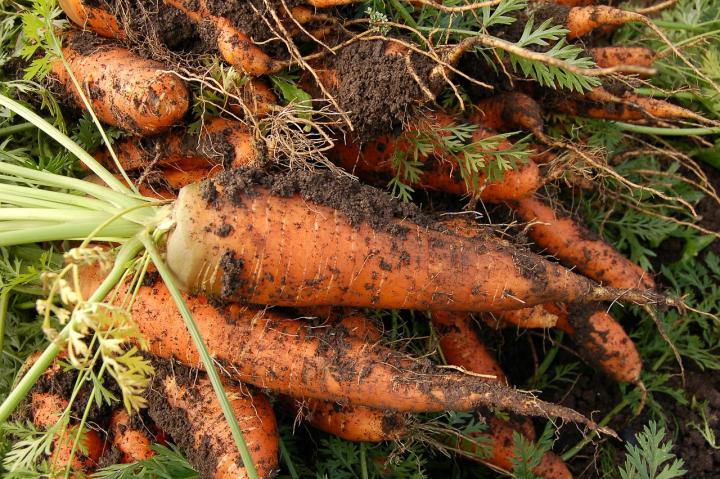
5. Carrots
We only include carrots because they’re easy to grow as long as they’re planted in loose, sandy soil during the cooler periods of the growing season—spring and fall (carrots can tolerate frost). Not all carrots are orange; varieties range in color from purple to white, and some are resistant to diseases and pests.
Many beginners find their carrots are short and deformed. This is typically due to poor, rocky soil, so it’s crucial to provide soft, loose soil that drains well. Mix in some sand and really loosen it up. Also, it is essential to THIN carrot seedlings to the proper spacing so they’re not overcrowded. Be bold! Thin those seedlings if you want carrots to form properly.
Learn more in our Growing Guide for Carrots.
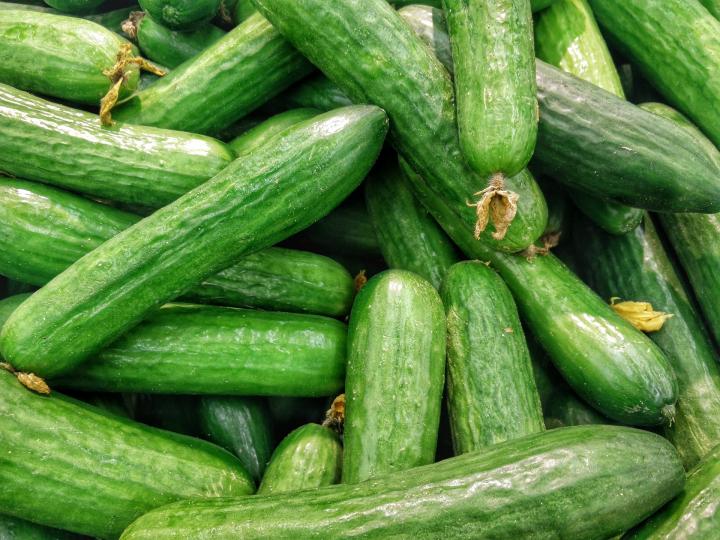
6. Cucumbers
Prepare in advance for cucumbers; amend the soil with a fertilizer high in nitrogen and potassium to support the plant’s large yields. If possible, plant cucumbers in the sun next to a fence. The fence will serve as a support for climbing and act as a shelter. Or plant them near corn. The corn will trap the heat that cucumbers crave and serve as a windbreak.
See our Growing Guide for Cucumbers.
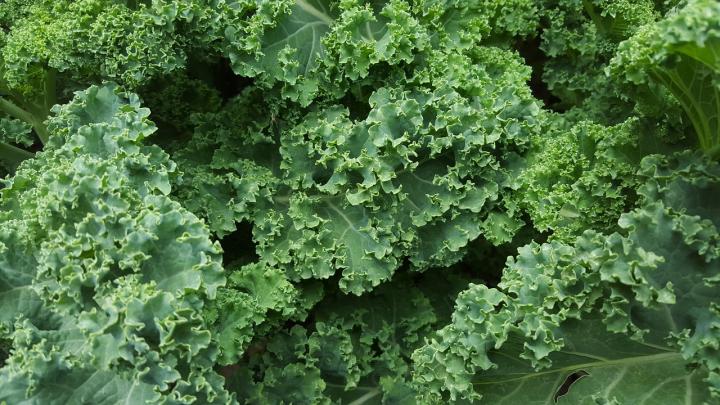
7. Kale
Like it or not, super-nutritious kale is very hardy and can grow in a wide range of temperatures. It can be harvested at many different stages, and the buds and flowers are edible, too! Mustards and collards are closely related to kale and are easy to grow.
Set out plants any time, from early spring to early summer, and kale will grow until it gets too hot. Plant again in the fall, especially if you live in the southern United States. Another nice thing about kale is that it only gets sweeter after being hit by a couple of frosts. Try kale baked, stir-fried, or steamed. Enjoy in salads, smoothies, omelets, casseroles, or wherever you’d use spinach.
See our Growing Guide for Kale.

8. Swiss Chard
Swiss chard—or simply “chard”—is a member of the beet family. It does well in both cool and warm weather. It is a nutritional superfood, high in vitamins A, C, and K, as well as minerals, phytonutrients, and fiber—plus, its rainbow of colors is beautiful!
See our Growing Guide for Swiss Chard.
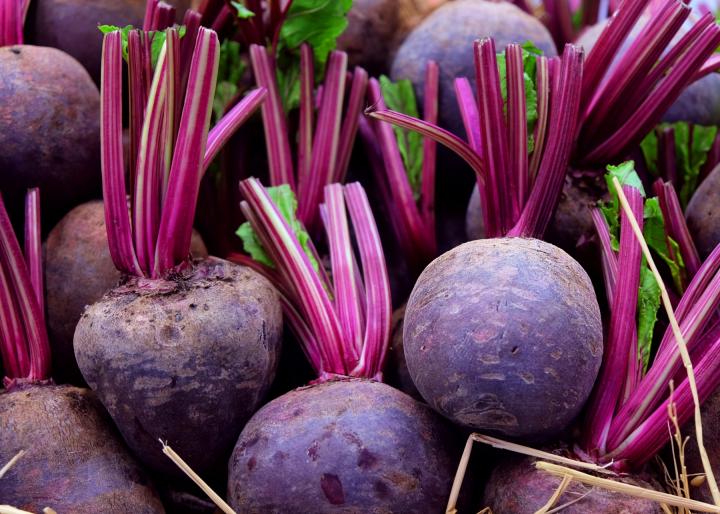
9. Beets
You haven’t lived until you’ve tasted beets you’ve grown yourself. We mean it! Nothing compares to garden-fresh beets, boiled or roasted until tender.
The quirky seed capsules contain two or three beet seeds, so the seedlings will always need to be thinned. Sow the seed capsules about an inch deep and 4 inches apart.
Harvest the roots at any time until they’re the size of a tennis ball. While you’re waiting for them to plump up, why not try a few of the leaves? They can be used like spinach, giving you two harvests from one plant.
See our Growing Guide to Beets.
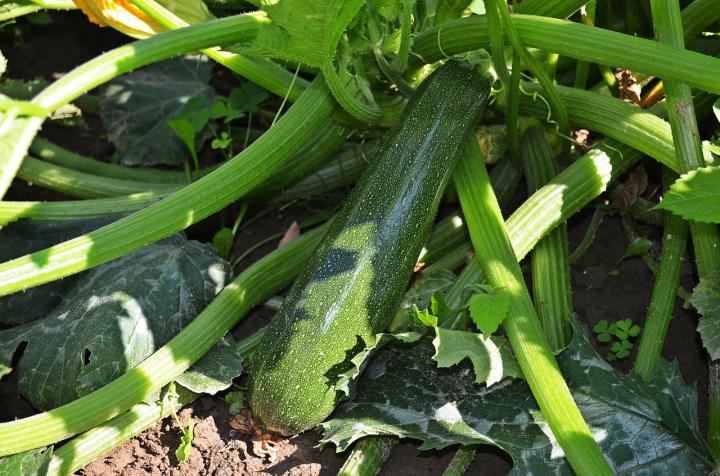
10. Summer Squash (Zucchini)
Summer squash and zucchini like well-composted soil and need plenty of space (plant them 3 to 6 feet apart in warm soil and lots of sun.) Soon enough, you’ll have so many zucchini, you’ll leave them on neighbors’ doorsteps! Always water at the soil level—not the leaves—to avoid powdery mildew.
See our Growing Guide for Squash and Zucchini.
The above crops are some of the easiest vegetables you can grow, but there are many, many more veggies for you to try! Check out our complete library of Growing Guides for advice on planting all the popular vegetables, fruits, herbs, and flowers.
You tell us! What are your favorite vegetables to grow from seed?

